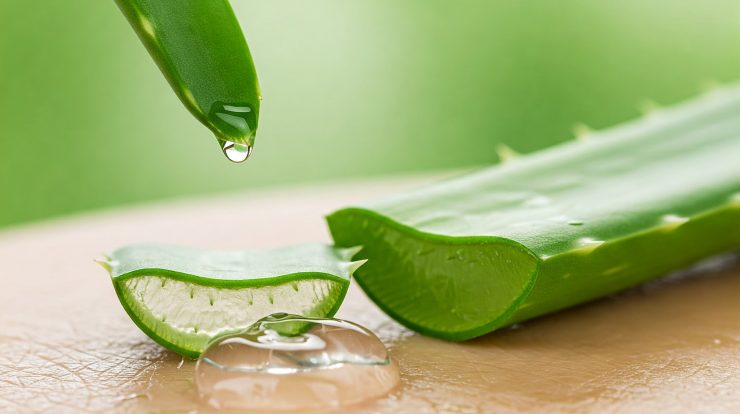
Acne breakouts often come with unwelcome companions: redness, swelling, tenderness, and general irritation – collectively known as inflammation. While treating the root causes of acne is crucial, managing this inflammation is key to promoting healing and improving skin comfort. Aloe vera gel, a popular natural remedy renowned for its soothing properties, is often suggested for this purpose. But how exactly does aloe vera gel help with acne inflammation, and how should you use it effectively? This guide explores the science and practical application.
What is Aloe Vera Gel?
Aloe vera gel is the clear, jelly-like substance found inside the leaves of the Aloe barbadensis plant. Used for centuries in traditional medicine, particularly for burns and skin irritations, its reputation stems from a rich composition of beneficial compounds, including:
- Polysaccharides: Sugars like acemannan that help hydrate the skin, form a protective barrier, and possess potential anti-inflammatory and wound-healing properties.
- Vitamins: Contains antioxidant vitamins A (beta-carotene), C, and E, which help protect skin cells from damage.
- Enzymes: May help gently exfoliate the skin.
- Minerals: Contains minerals like zinc, which plays a role in skin health.
- Salicylic Acid: Contains a small amount of naturally occurring salicylic acid, known for its anti-inflammatory and pore-clearing effects in higher concentrations
- Other Compounds: Includes various amino acids, saponins (cleansing agents), and anthraquinones (though these are more concentrated in the outer leaf latex, not typically the gel used for skincare).
How Aloe Vera Gel May Help Acne Inflammation
While not a magic bullet for curing acne itself, aloe vera gel’s properties can make it a beneficial addition to a routine focused on calming inflamed breakouts:
- Anti-inflammatory Action: Compounds within aloe vera, including polysaccharides and salicylic acid, may help reduce the redness, swelling, and general inflammation associated with inflammatory acne lesions like papules and pustules.
- Soothing and Cooling Effect: Applying cool aloe vera gel directly to inflamed skin provides an immediate soothing sensation, helping to alleviate discomfort and reduce the feeling of heat often associated with angry pimples.
- Hydration without Greasiness: Many acne treatments (like benzoyl peroxide or retinoids) can be drying. Aloe vera is primarily water-based and provides lightweight hydration without clogging pores or feeling heavy, which helps maintain a healthy skin barrier. A well-hydrated, healthy barrier is better equipped to heal and less prone to further irritation.
- Supporting Skin Healing: By providing moisture and potentially reducing inflammation, aloe vera may support the skin’s natural healing process after a breakout, possibly helping to minimize the appearance or duration of post-inflammatory hyperpigmentation (the dark spots left after pimples heal).
- Mild Antimicrobial Properties: While not as potent as targeted acne treatments, aloe vera does possess some mild antibacterial and antifungal properties that could offer a minor benefit against surface bacteria.
Limitations of Aloe Vera for Acne
It’s crucial to have realistic expectations:
- Symptom Management, Not a Cure: Aloe vera primarily helps manage the symptoms of inflammation (redness, irritation, dryness). It does not address the root causes of most moderate-to-severe acne, such as excess oil production driven by hormones, deep pore blockages, or significant bacterial proliferation.
- Limited Effect on Deep Cysts: Due to its topical nature, it’s unlikely to significantly impact the deep inflammation associated with cystic or nodular acne.
- Not a Replacement for Core Treatments: Aloe vera should be viewed as a complementary step, used alongside, not instead of, evidence-based acne treatments recommended by a dermatologist if your acne is persistent or severe.
How to Use Aloe Vera Gel for Acne Inflammation
To get the most benefit and minimize potential issues:
- Choose High-Quality, Pure Gel: Look for products listing aloe vera (Aloe Barbadensis Leaf Juice or Gel) as the first ingredient with a high percentage (ideally 95%+). Avoid gels containing added alcohol (which is drying), artificial colors, or fragrances that could cause irritation. Using fresh gel directly from an aloe plant leaf is an option, but always patch test first as natural components can vary.
- Cleanse Skin Gently: Always apply aloe vera gel to clean skin. Use a mild, non-irritating cleanser.
- Patch Test: Especially if using gel directly from the plant or a new product, apply a small amount to an inconspicuous area (like the inner arm) and wait 24 hours to check for any adverse reactions.
- Application Methods:
- Spot Treatment: Apply a small amount of pure gel directly onto red, inflamed pimples 1-2 times daily after cleansing.
- Lightweight Moisturizer: Use a thin layer all over the face as a light, oil-free moisturizer, particularly if you have oily or combination skin, or if other acne treatments are causing dryness.
- Soothing Mask: Apply a thicker layer of gel to the face, leave it on for 10-20 minutes for extra soothing and hydration, then rinse off or gently tissue off excess.
- Mix with Other Products: Some people mix a small amount of aloe gel into their regular moisturizer for added soothing benefits.
- Follow with Sunscreen (AM): Always apply broad-spectrum sunscreen during the day, as inflammation can lead to post-inflammatory hyperpigmentation, which is worsened by sun exposure.
Potential Side Effects
Aloe vera gel is generally very well-tolerated, but potential side effects are possible, though rare:
- Mild stinging or burning upon application (more likely if skin barrier is compromised).
- Allergic reactions (contact dermatitis) in sensitive individuals.
Discontinue use if significant irritation occurs.
Conclusion
Aloe vera gel can be a valuable addition to a skincare routine for managing acne inflammation. Its natural soothing, hydrating, and anti-inflammatory properties can help calm redness, reduce irritation, and provide comfort to inflamed breakouts. While it won’t cure acne or address deep cystic lesions on its own, using a pure, alcohol-free aloe vera gel as a spot treatment, moisturizer, or mask can effectively complement your core acne treatments and support overall skin health. Remember to choose products wisely, patch test, and consult a dermatologist for persistent or severe acne conditions.
